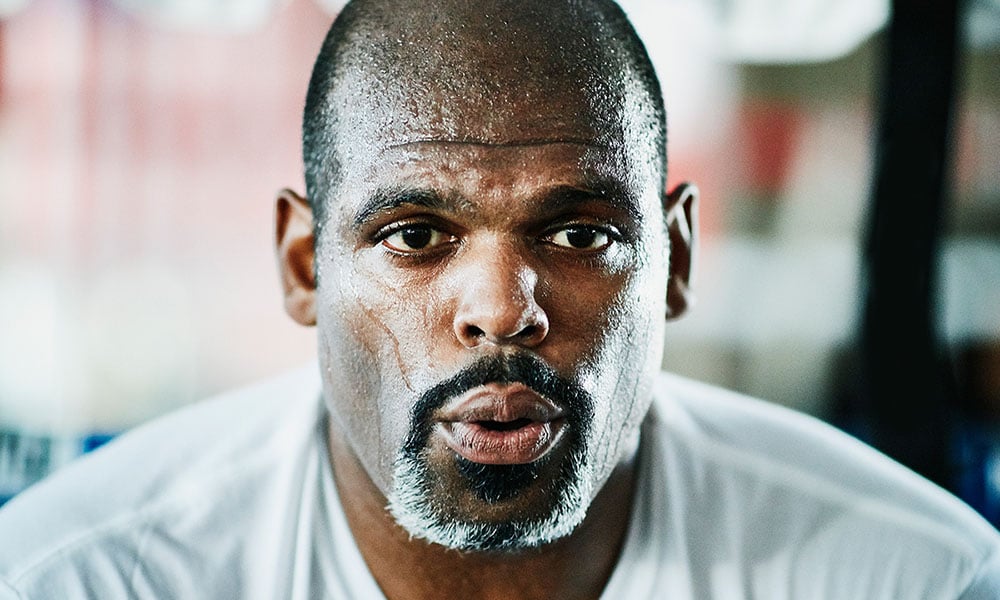Since mid-March, most of the country has been dealing with social distancing rules, stay-at-home orders, business closures, overcrowded hospitals and limited health services.
Consequently, many people are feeling isolated and lonely and may be hurting emotionally and financially. Even as parts of the world are reopening, the fear of coming into close contact with someone who has the virus is causing many to feel anxious.
As we navigate the latter half of 2020, the far-reaching effects and potential traumas associated with COVID-19 are still unfolding. Few people will be unaffected by the pandemic, and mental health experts expect that post-traumatic stress disorder (PTSD), most commonly associated with combat veterans, may become more commonplace. COVID-19 survivors, in particular, are at high risk for developing PTSD (Xiao et al. 2020).
How can you help clients who need to move, be heard and be seen? This article takes a broad look at PTSD, how exercise can help, and what you as a fitness professional can do, all while remaining within scope of practice.
Note: The information provided is for general education purposes only. Do not diagnose or attempt to treat a client who you believe may have PTSD. Always refer the person to a qualified healthcare professional like a health practictioner. Learn more about additional concepts for mental wellbeing within the NASM Wellness Coach Course here.
What Is PTSD?
PTSD is a mental disorder that can develop after a person is exposed to a traumatic event, such as a natural disaster or serious accident; a terrorist act; war/combat; or violent personal assault, such as rape (APA 2020). Symptoms include disturbing thoughts and feelings, dreams related to the event, mental or physical distress due to trauma-related cues, and an increase in the fight-or-flight response.
While symptoms usually begin within the first 3 months after the event, they may not occur until years later, especially if the event is not acknowledged or processed. Trauma survivors often develop depression, anxiety and mood disorders (APA 2020). Drug and alcohol abuse are also common.
Events that often trigger PTSD:
• wartime trauma
• child abuse
• sexual assault or abuse
• physical violence
• threats with a weapon
• fire
• life-threatening illness
• traumatic injury
• kidnapping
• a traumatic accident (e.g., car/airplane crash)
• a natural disaster
• a terrorist attack
• an abrupt, unexpected event like the pandemic
People who lack a strong support system, endure long-term emotional trauma, or have an alcohol or substance-use problem are especially vulnerable to PTSD.
Symptoms of PTSD:
• chronic anxiety
• difficulty falling or staying asleep
• irritability
• anger and angry outbursts
• panic attacks
• hypervigilance (being constantly on guard for threats)
• excessive startle reflex (a tendency to be easily startled)
Trauma that results in PTSD may occur over a long period of time or as a single event (National Collaborating Centre for Mental Health 2005). Symptoms such as hyperarousal (an abnormal state of heightened anxiety) typically develop as a result of the body’s overreaction to the stress response, which causes biological changes in the brain.
Simply remembering a traumatic event can trigger this effect (Center for Substance Abuse Treatment 2014)—even if the threat is gone, the body responds as if it weren’t.
See also: How Stress Affects The Body
Challenges for Exercising with PTSD
During exercise, the heart beats faster, blood pressure increases, there may be shortness of breath, etc. These are all symptoms associated with anxiety. A client who has PTSD may be deterred from exercising because these reactions are similar to those that occur during an episode.
Hyperarousal can persist long after the trauma has passed; this leaves a person feeling overreactive to anything that reminds them of the event (including sights, smells, sounds, or even words or lyrics). For this reason, people who have PTSD may avoid stimulating activities, thereby increasing their risk for physical problems like obesity, heart disease, chronic pain and diabetes.
Other side effects of PTSD—such as depression, excessive drinking, drug use and smoking—compound problems of low motivation and low energy levels, making it more difficult to start or stay with a regular exercise program. Although exercise offers many benefits, its ability to spark hyperarousal can be problematic for people with PTSD. Personal trainers should keep this in mind when structuring a workout.
How Can Exercise Help with PTSD?
There is evidence that physical health influences mental health, and physical manifestations of psychological stress and trauma can show up as muscle tension, increased heart rate, palpitations, trembling and even pain (Center for Substance Abuse Treatment 2014). With this in mind, it’s even more important to get people moving, as motion is the lotion that “lubricates” the body and can potentially help individuals process the effects of trauma, depression, anxiety and PTSD.
Exercise is therefore a good way to break down barriers for those with PTSD. However, progress must be slow, gradual and repetitive to avoid overwhelming clients and to create a path toward self-awareness. Movement doesn’t have to be excessive or even elevate the heart rate. It can be as simple as focusing on the breath and bringing mindfulness to simple tasks and movements (Reddy 2013).
Beginning an Exercise Program
To best support a client who has PTSD, personal trainers must provide a safe place and a simple, repetitive, achievable and gradual workout—one that builds range of motion and strength, along with confidence. Since hyperarousal is a potential trigger, choosing a mind-body focus with breathing as a central aspect is a sound approach. A good program will also cultivate self-awareness and appreciation. Tai chi, qigong, yoga and Pilates are excellent examples, as they are breath-centered, noncompetitive and nurturing in nature (Netz & Lidor 2003).
Deep, diaphragmatic breathing is a great starting place, no matter what the workout is. Ask clients to take a comfortable sitting position (or stand, if they prefer), and cue them to breathe in whatever way is comfortable. After several deep breaths, ask them to describe where they feel the breath, then invite them to explore what feels best (inhaling and exhaling through the mouth or nose, etc.). Encouraging clients to determine their preferences will help keep distractive, destructive thoughts at bay. It will also help people understand what they are feeling and put them in a better position to respond to changes rather than react.
Deep, focused breaths calm the nervous system, slow the heart rate, lower blood pressure and bring attention to the present moment (Alderman 2016). While deep breathing may not seem like much, it goes a long way toward setting a positive mindset and bringing clients’ attention to what they are feeling.
When working with people who have PTSD, make sure they are ready to listen and able to take in your instructions. Do this by simply facing them and confirming that they are listening and ready for your instructions. This is important because many people with PTSD tend to dissociate, and you want your clients to be fully present.
Use noncompetitive language in your coaching and cuing. Give easy-to-follow, simple, step-by-step instructions and allow clients time to respond to cues before you move on. Moving too quickly or giving rapid-fire directions can create an aggressive, competitive environment that could provoke hyperarousal. (See “Exercise Programming for PTSD,” left, for more.)
A New Way Forward
Whether or not your clients (or you) exhibit signs of PTSD, it’s a good idea to be gentle and patient right now as the industry finds its way.
One thing’s for sure—people need to move, be heard and be seen, and many need a little human interaction, as well. Your presence and availability as a fitness professional is a great resource and will continue to be so.
PTSD Statistics
There are correlations between combat and PTSD. According to Audoin-Rouzeau & Becker (2014), “One-tenth of mobilised American men were hospitalised for mental disturbances between 1942 and 1945, and after 35 days of uninterrupted combat, 98 percent of them manifested psychiatric disturbances in varying degrees.”
In the wake of the COVID-19 pandemic, GlobalData Healthcare epidemiologists expect a significant increase in the prevalence of PTSD, and the risk is twice as high for women as it is for men. After the severe acute respiratory syndrome (SARS) outbreak in 2003, frontline healthcare workers and self-quarantined people showed symptoms of PTSD (GlobalData Healthcare 2020).
The pandemic has been a significant stressor in the lives of many people, including those not directly affected by COVID-19.
Psychological Strength for Sports

Ignite your clients’ concentration and help them achieve more with NASM’s Mental Toughness continuing education course, which focuses on the key aspects of psychological strength for fitness and sport. Learn how to support clients in keeping their minds engaged, responsive, resilient and strong under pressure.
There are no prerequisites for this course. Upon completion, you will be able to do the following:
• Explain how to enhance attentional focus.
• Identify the sources of confidence used in exercise and sport situations.
• Describe how to assess and increase commitment.
• Define different types of anxiety and the role they play in attempting to reach fitness or sports performance goals.
Find out more at nasm.org/products/CEU1109053.
Exercise Programming for PTSD

Refer to the following guidelines when designing exercise programs for clients with PTSD:
Focus on breathing. Teach mindful breathing and/or meditation at the start and/or end of a program.
Be repetitive. Repeat cues to help clients master moves while building confidence and self-efficacy.
Offer predictability. To reduce anxiety, be predictable and use repetition.
Use noncompetitive language and practices. Keep in mind that a competitive environment may activate the sympathetic nervous system, increasing stress levels.
Provide time for reflection. Help clients discover and develop self-awareness. Assist them in feeling and responding to the mild stresses of exercise. Help people learn to differentiate these from a state of hyperarousal.
Be patient. Take it slow and steady, paying attention to clients’ reactions to each stage of the exercise program. Pull back when necessary.
Set realistic goals. Help clients figure out realistic fitness and health goals.
Remain flexible. Be ready to switch gears and calmly respond to challenges as they arise (i.e., loud sounds, damaged equipment, clients’ needs, etc.).
Be flexible with cues. Develop several different ways to say the same thing so that you have a backup cue or instruction if the first one doesn’t work. Clients who have PTSD will likely not respond in the same way as other clients.
Come prepared. If a client experiences an episode or a drastic mood change during a session, be ready to stop, talk and listen. Return to deep breathing or do some simple stretches before moving on.
Be knowledgeable. Stay informed about your clients’ health. Learn about changes in medication or any incidences that have occurred since your last session. Adapt as needed.
REFERENCES
Alderman, L. 2016. Breathe. Exhale. Repeat: The benefits of controlled breathing The New York Times. Accessed Aug. 4, 2020: nytimes.com/2016/11/09/well/mind/breathe-exhale-repeat-the-benefits-of-controlled-breathing.html.
APA (American Psychiatric Association). 2020. What is posttraumatic stress disorder? Accessed Aug. 8, 2020: psychiatry.org/patients-families/ptsd/what-is-ptsd.
Audoin-Rouzeau, S., & Becker, A. 2014. Understanding the Great War. NY: Hill and Wang.
Center for Substance Abuse Treatment (U.S.). 2014. Understanding the impact of trauma. In Trauma-Informed Care in Behavioral Health Services. Rockville, MD: Substance Abuse and Mental Health Services Administration.
GlobalData Healthcare. 2020. COVID-19 pandemic could cause an increase in prevalence of PTSD. Accessed Aug. 4, 2020: pharmaceutical-technology.com/comment/ptsd-covid-19/.
Kim, S.H., et al. 2012. PTSD & exercise: What every exercise professional should know. IDEA Fitness Journal, 9 (6), 20–23.
National Collaborating Centre for Mental Health (UK). 2005. Post-Traumatic Stress Disorder: The Management of PTSD in Adults and Children in Primary and Secondary Care. Accessed Aug. 4, 2020: ncbi.nlm.nih.gov/books/NBK56494/.
Netz, Y., & Lidor, R. 2003. Mood alterations in mindful versus aerobic exercise modes. The Journal of Psychology, 137 (5), 405–19.
Reddy, S. 2013. Doctor’s orders: 20 minutes of meditation twice a day. Wall Street Journal. Accessed June 1, 2020: wsj.com/articles/SB10001424127887324345804578424863782143682.
Xiao, S., et al. 2020. Survivors of COVID-19 are at high risk of posttraumatic stress disorder. Global Health Research and Policy, 5 (29).

















